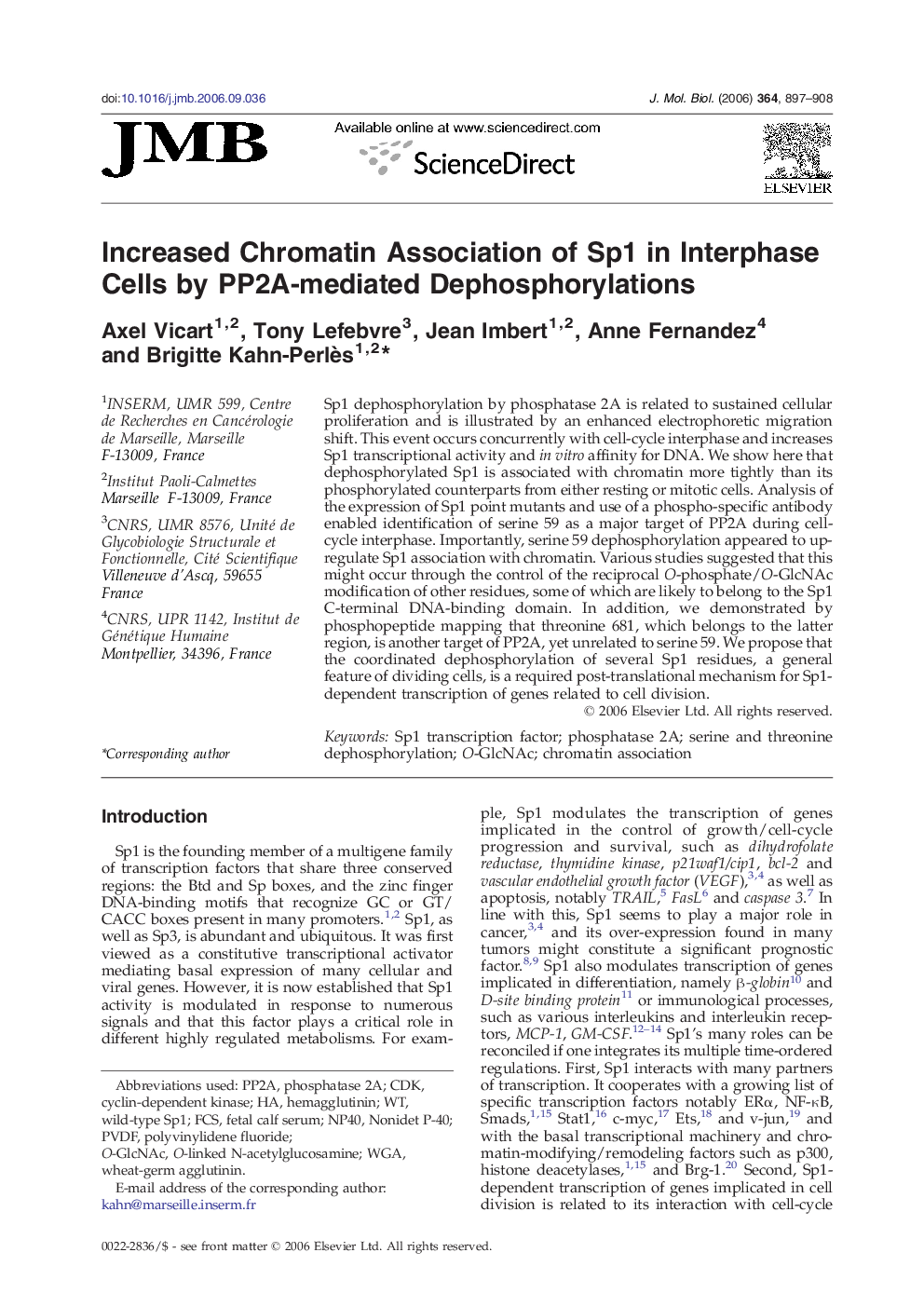| Article ID | Journal | Published Year | Pages | File Type |
|---|---|---|---|---|
| 2189300 | Journal of Molecular Biology | 2006 | 12 Pages |
Sp1 dephosphorylation by phosphatase 2A is related to sustained cellular proliferation and is illustrated by an enhanced electrophoretic migration shift. This event occurs concurrently with cell-cycle interphase and increases Sp1 transcriptional activity and in vitro affinity for DNA. We show here that dephosphorylated Sp1 is associated with chromatin more tightly than its phosphorylated counterparts from either resting or mitotic cells. Analysis of the expression of Sp1 point mutants and use of a phospho-specific antibody enabled identification of serine 59 as a major target of PP2A during cell-cycle interphase. Importantly, serine 59 dephosphorylation appeared to up-regulate Sp1 association with chromatin. Various studies suggested that this might occur through the control of the reciprocal O-phosphate/O-GlcNAc modification of other residues, some of which are likely to belong to the Sp1 C-terminal DNA-binding domain. In addition, we demonstrated by phosphopeptide mapping that threonine 681, which belongs to the latter region, is another target of PP2A, yet unrelated to serine 59. We propose that the coordinated dephosphorylation of several Sp1 residues, a general feature of dividing cells, is a required post-translational mechanism for Sp1-dependent transcription of genes related to cell division.
